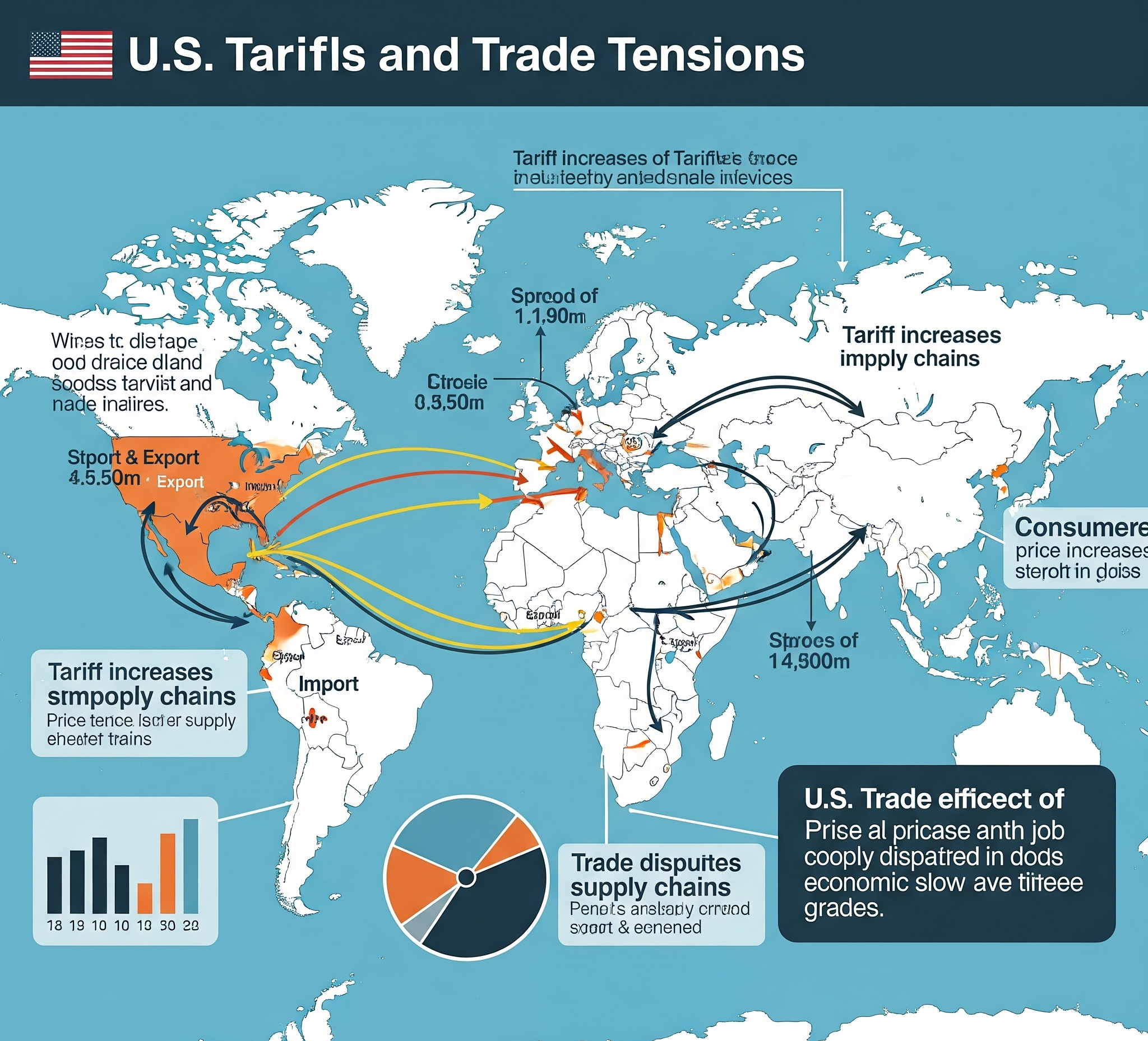U.S. Tariffs :- In recent years global trade has faced many ups and downs. One major reason is the tariff policies introduced by the United States especially under President Donald Trump’s administration. These tariffs or taxes on imported goods have created tensions between countries and affected businesses, prices and even global economic growth.

What Are Tariffs?
Tariffs are taxes that one country places on goods imported from another country. The goal is usually to protect domestic industries by making foreign products more expensive. This can encourage people to buy more goods made in their own country.
For example if the U.S. puts a 10% tariff on smartphones from China those phones become more expensive in U.S. stores. People might then choose to buy smartphones made in the U.S. helping American companies.
Trump’s Tariff Strategy
President Trump introduced tariffs as part of his “America First” strategy. He believed that the U.S. had unfair trade deals with countries like China and needed to protect American workers and companies. His administration imposed:
- A 10% tariff on most imports.
- A 55% tariff specifically on goods from China.
These were some of the highest tariffs in recent U.S. history.
Impact on U.S.-China Trade
The U.S.-China relationship has been one of the biggest trade stories of the last decade. China is one of the world’s largest exporters and the U.S. is one of the largest importers. When the U.S. imposed high tariffs on Chinese goods China responded with its own tariffs on American products like soybeans, cars and electronics.
This back and forth became known as the “trade war.” While both countries have tried to restart trade talks tensions still remain. Experts worry that if more tariffs are added global growth could slow down by another 0.5%.
Global Market Reaction
Markets hate uncertainty. When countries fight over trade investors get nervous. Here are some of the effects seen:
- Stock markets in the U.S., China and Europe became more volatile.
- Companies delayed investment decisions because of unclear future trade rules.
- Consumers faced higher prices on imported goods from electronics to clothes.
- Global trade growth slowed down significantly.
For example American companies that rely on Chinese parts found it more expensive to make products. Many had to raise prices or cut jobs.
U.S.-UK Trade Deal
Amid all this there was one positive development. At the G7 summit the U.S. and the UK signed a new trade deal. This agreement aims to make trade between the two countries easier and reduce tariffs on some goods.
For the UK this was especially important after Brexit as it is trying to build strong trade ties outside the European Union. For the U.S. it was a chance to show it can still make deals with key allies.
EU’s Response to U.S. Tariffs
The European Union is also worried about U.S. tariffs. The U.S. had threatened higher duties on key EU exports such as cars and steel. To prevent this the EU is now considering applying a 10% tariff on certain U.S. goods. This move is seen as a way to create balance and avoid a bigger trade fight.
But the EU does not want a trade war. Many European countries depend heavily on exports and fear that increased tariffs will hurt their economies.
The Bigger Picture: What’s at Stake?
Trade tensions don’t just affect the countries directly involved. In today’s globalized world countries are connected through supply chains and trade routes. A decision in one country can ripple across the world.
1. Global Economic Growth
The World Bank and the International Monetary Fund (IMF) have both warned that ongoing trade tensions could slow global economic growth. Lower growth means fewer jobs, less income, and more poverty in developing countries.
2. Consumer Prices
Tariffs make imports more expensive. That cost is usually passed on to consumers. In the U.S., shoppers may now pay more for things like electronics, clothes or home appliances that come from China or Europe.
3. Business Uncertainty
Businesses don’t like sudden changes. If they are not sure what tariffs will look like in six months, they may delay expanding, hiring or even producing new goods.
4. Global Cooperation
Trade fights can damage trust between countries. It becomes harder to work together on other global issues like climate change, technology sharing, or health emergencies.
What Could Happen Next?
While trade talks between the U.S. and China have resumed many experts say progress is slow. Both sides want to protect their interests and trust is low.
There are a few possible outcomes:
- Deal and rollback of tariffs: This would bring relief to global markets.
- More tariffs: This could escalate tensions and hurt global growth.
- New trade alliances: Countries may try to form new deals (like U.S.-UK) to reduce dependency on any one nation.
Conclusion
U.S. tariffs and trade tensions are not just headlines they affect the everyday lives of people around the world. From prices in stores to job opportunities and economic stability the consequences are real and wide reaching.
The world is watching closely to see how these tensions unfold. If countries can come together negotiate fairly and agree on balanced trade rules the future could still be bright for the global economy. But if the fights continue the risks will grow.
Trade is the engine of global progress. Managing it wisely is more important than ever.
